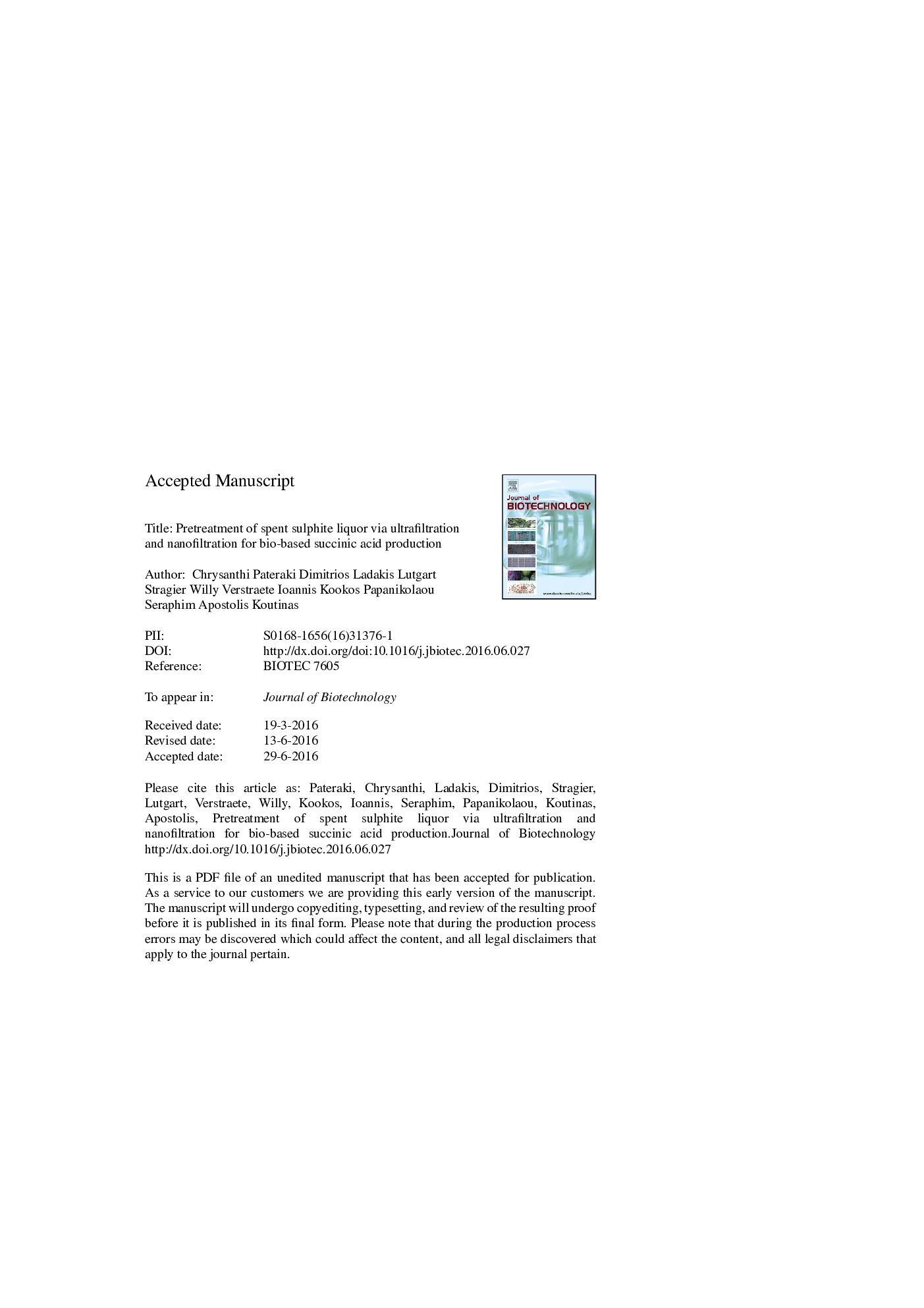| Article ID | Journal | Published Year | Pages | File Type |
|---|---|---|---|---|
| 6490500 | Journal of Biotechnology | 2016 | 37 Pages |
Abstract
Ultrafiltration and nanofiltration of spent sulphite liquor (SSL) has been employed to evaluate the simultaneous production of lignosulphonates and bio-based succinic acid using the bacterial strains Actinobacillus succinogenes and Basfia succiniciproducens. Ultrafiltration with membranes of 10, 5 and 3Â kDa molecular weight cut-off results in significant losses of lignosulphonates (26-50%) in the permeate stream, while nanofiltration using membrane with 500Â Da molecular weight cut-off results in high retention yields of lignosulphonates (95.6%) in the retentate stream. Fed-batch bioreactor cultures using permeates from ultrafiltrated SSL resulted in similar succinic acid concentration (27.5Â g/L) and productivity (0.4Â g/L/h) by both strains. When permeates from nanofiltrated SSL were used, the strain B. succiniciproducens showed the highest succinic acid concentration (33.8Â g/L), yield (0.58Â g per g of consumed sugars) and productivity (0.48Â g/L/h). The nanofiltration of 1Â t of thick spent sulphite liquor could lead to the production of 306.3Â kg of lignosulphonates and 52.7Â kg of succinic acid, whereas the ultrafiltration of 1Â t of thick spent sulphite liquor using a 3Â kDa membrane could result in the production of 237Â kg of lignosulphonates and 71.8Â kg of succinic acid when B. succiniproducens is used in both cases.
Keywords
Related Topics
Physical Sciences and Engineering
Chemical Engineering
Bioengineering
Authors
Chrysanthi Pateraki, Dimitrios Ladakis, Lutgart Stragier, Willy Verstraete, Ioannis Kookos, Seraphim Papanikolaou, Apostolis Koutinas,
